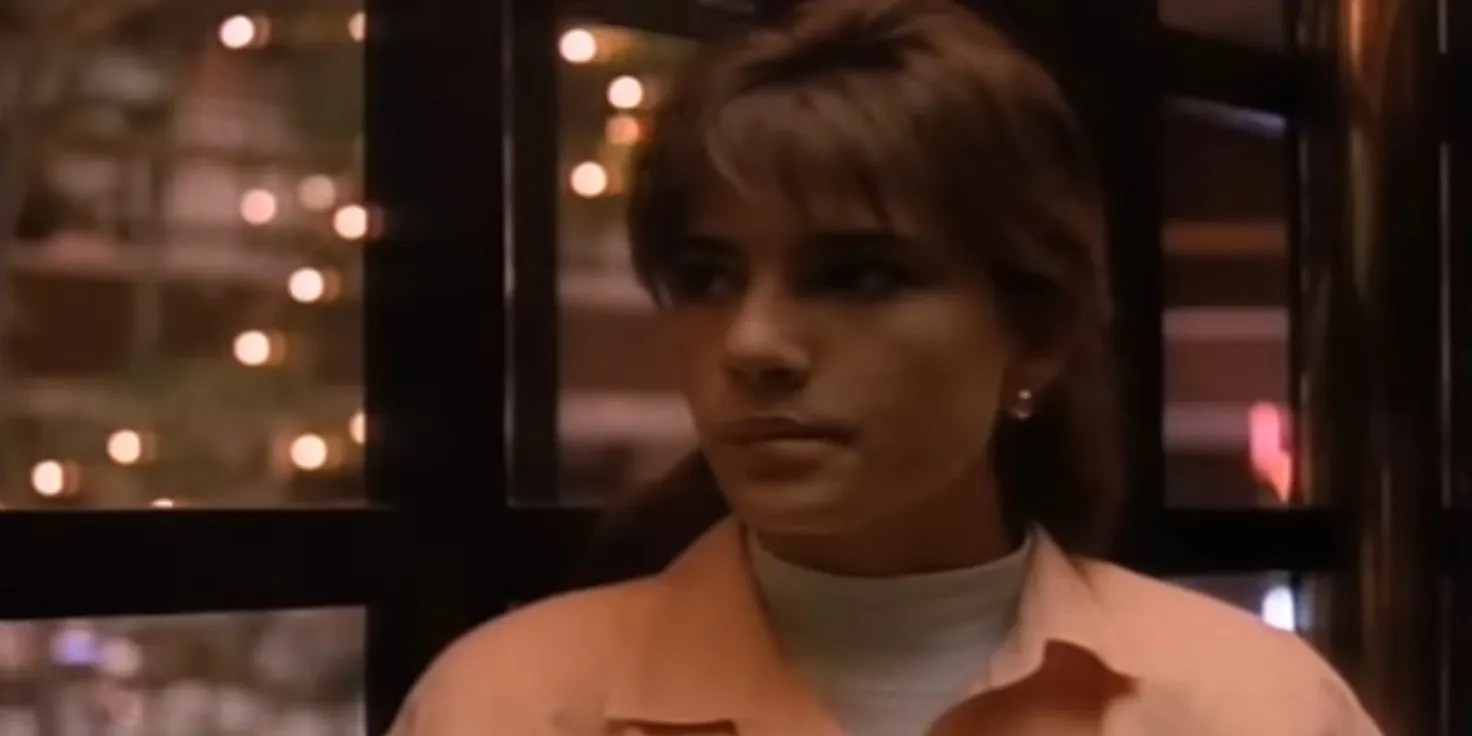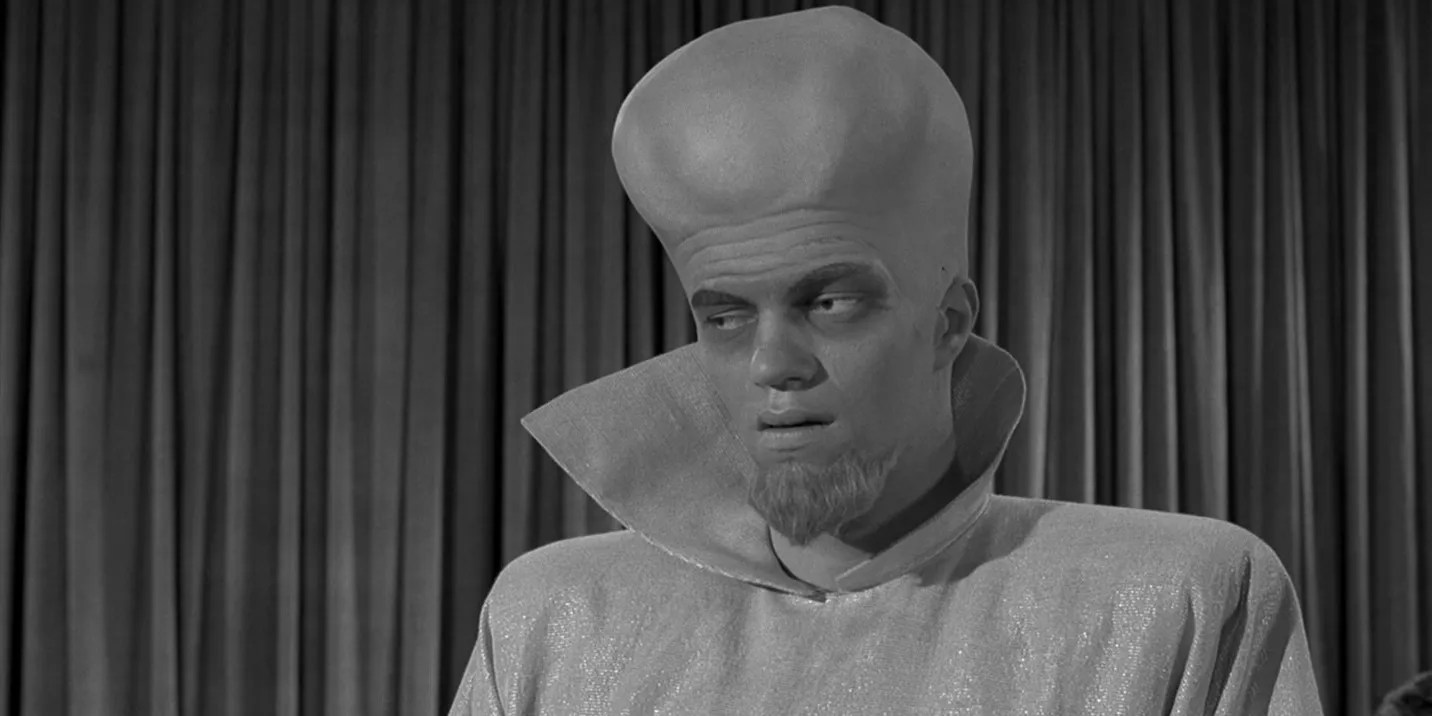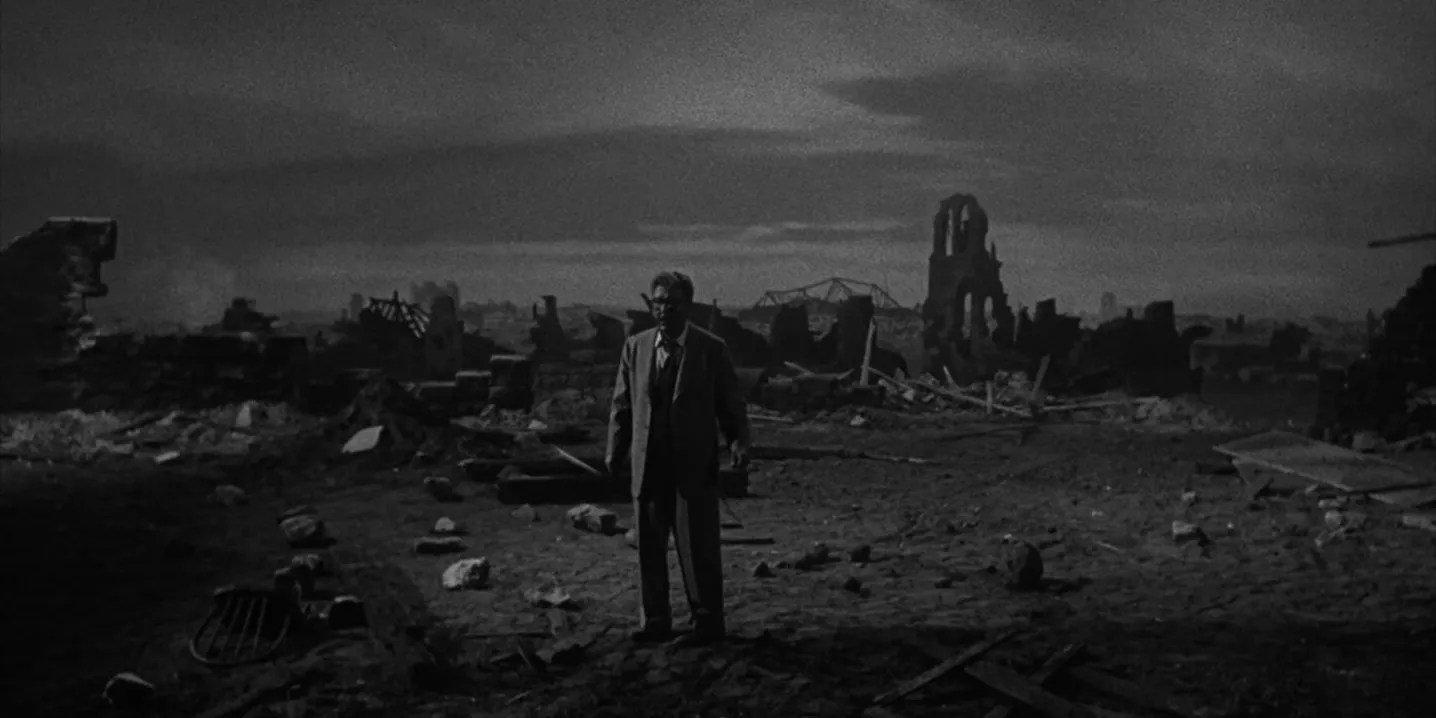Summary
Ofthe numerous anthology seriesbroadcast in America,The Twilight Zonestands out as perhaps the most iconic. The series was revived on several occasions (once in the 1980s, once in the early 2000s, and, most recently, between 2019 and 2020), with each iteration blending speculative concepts with contemporary concerns.
With so many different seasons and series, it can be hard to know where to start. One advantage of anthology television is that it can be watched in any order; however, a general consensus has emerged concerning the best seasons of the franchise.

10Season Two (2020)
The Twilight Zone(2019–2020) | Average IMDB Rating: 6.3
Given the talent both in front of and behind the camera in Jordan Peele’s iteration ofThe Twilight Zone, it’s not only surprising that the series lasted for only two seasons, but that both were generally poorly received. Many viewerslikened the show toBlack Mirrorand criticized its heavy-handed moralizing, but the series found its feet in its second year.
While there are still clunkers (“8”, “Ovation”, and “Downtime”), the season does have its hidden gems. “Try, Try” is a fresh take on the time loop trope, while “The Who of You” embraces the irony of Serling’s classic series. As established IP cash-ins go, this take on the franchise could have been better, but it isn’t offensively bad.

9Season Three (1988–1989)
The Twilight Zone(1985–1989) | Average IMDB Rating: 6.3
The third season ofThe Twilight Zone’s first revival was produced not because there were amazing stories begging to be told, but because the series required a certain number of episodes before it could be sold into syndication. Behind-the-scenes dissatisfaction with earlier seasons resulted in a purge of the writing team, and over a third of the season’s episodes were written byBabylon 5’s J. Michael Straczynski.
Given the season’s troubled production, it’s perhaps unsurprising that it failed to lure viewers back. However, despite these shortcomings, the season does feature one of the franchise’s best episodes: a haunting adaptation of Tom Godwin’s short story “The Cold Equations”.

8Season One (2002–2003)
The Twilight Zone(2002–2003) | Average IMDB Rating: 6.6
The early 2000s revival ofThe Twilight Zoneis generally regarded as a flop that failed to update Serling’s classic formula for a modern audience. This was not for want of trying: the Forrest Whittaker-hosted series offered fresh spins on classicTwilight Zoneconcepts, like a sequel to 1961’s “It’s a Good Life” and a post-9/11 update for “The Monsters Are Due On Maple Street”.
Yet the show’s reliance on the past is limiting (a remake of “Eye of the Beholder” lacks the original’s atmosphere), and its best episode uses a novel premise. In “The Placebo Effect”,Star Trekalumnus Jeffrey Combsplays a hypochondriac who appears to have contracted a fictional disease. The result is a twisty medical drama that honors the spirit of the originalTwilight Zonewithout slavishly adhering to it.

7Season Two (1986–1987)
The Twilight Zone(1985–1989) | Average IMDB Rating: 6.6
Trouble with ratings caused behind-the-scenes trouble for the second season of the 1980s revival, leading to a format change partway through the run. This change was not enough to pull the show out of a ratings nosedive, and episode quality was further impacted by network interference.
Game of Thrones' George R.R. Martincontributed several scripts to the season, including “The Toys of Caliban”, which, while not exactly in step with modern portrayals of mental illness, has some memorably grisly moments. Other notable stories include a condensed remake of “The After Hours” that swaps the original’s creeping tension for an emphasis on body horror, as well as “Shelter, Skelter”, a post-apocalyptic drama.

6Season One (1985–1986)
The Twilight Zone(1985–1894) | Average IMDB Rating: 7.0
. Rather than telling individual stories, each hour-long episode of the revival’s first season is made up of numerous tales, and there’s a tangible sense ofThe Twilight Zonefinding its feet in a new decade and with a new format
The very short stories often end up feeling like filler and the longer installments are sometimes poor (“Ye Gods” is nearly unwatchable). Nonetheless, the season does feature some classics.The twist ending of “A Little Peace and Quiet"is incredible, even if the story itself is a little chaotic, while “Nightcrawlers” uses nightmarish horror to explore the trauma of the Vietnam War.

5Season Four (1963)
The Twilight Zone(1959–1964) | Average IMDB Rating: 7.2
The fourth season of the originalTwilight Zoneexperimented with a format change: rather than telling half-hour stories, the runtime was doubled, with mixed results. While the extended length gives certain episodes time to breathe, weaker concepts can feel painfully drawn out, and it’s unsurprising that the series returned to its previous format following this experiment.
Despite structural issues, the season does have some strong episodes. “Jess-Belle” is a spooky tale of thwarted love in a rural community, “The New Exhibit” blends true crime with the supernatural, and “On Thursday We Leave For Home” deliversone of the show’s saddest endings. The season may be imperfect, but it retains the charm of the originalTwilight Zone.

4Season Five (1959–1960)
The Twilight Zone(1959–1964) | Average IMDB Rating: 7.3
While it is generally acknowledged that Rod Serling’sTwilight Zonewas running out of steam by its final season, the initial show’s swansong still has some enjoyable installments.“Living Doll” is genuinely terrifying, “Come Wander With Me” is an underrated and enigmatic gem, and “Nightmare at 20,000 Feet” combines one of William Shatner’s hammiest performances with an iconic story about fear of flying.
The season benefits from a return to the classic half-hour format, meaning that even the weaker episodes (“Probe 7, Over and Out”, “Black Leather Jackets”, and “Sounds and Silences”) don’t overstay their welcome. However, it, unfortunately, ends with “The Bewitchin' Pool”, a dire episode that’s a poor conclusion to an otherwise classic anthology series.

3Season Three (1961–1962)
The Twilight Zone(1959–1964) | Average IMDB Rating: 7.4
As well as featuring some ofThe Twilight Zone’s most memorable episodes (“To Serve Man”, “Five Characters in Search of an Exit”, “The Shelter”), the show’s third season delivers perhaps the franchise’s most consistent run of consecutive greats: “It’s a Good Life”, “Deaths-Head Revisited”, and “The Midnight Sun”.
This is not to say that the season is perfect. After all, “Cavendar is Coming” iswidely regarded as the worst episodeof the entire show, despite being it’s most expensive, and stories like “Four O’Clock” and “The Jungle” are never more than mediocre. The third season has high highs and low lows, it’s a blessing, then, that the anthology format means that viewers can choose to skip its weaker entries.

2Season Two (1960–1961)
The Twilight Zone(1959–1964) | Average IMDB Rating: 7.5
The Twilight Zone’s second season mostly maintains the momentum of the first; it contains some of the franchise’s most iconic stories, including “The Eye of the Beholder” and “Will the Real Martian Please Stand Up?”.
Cost-cutting measures led to a dip in video quality for a brief run of episodes, but, while the picture suffers, the quality of storytelling remains consistent. The season also features the classic episode “The Obsolete Man”, a dystopian talethat remains relevant today.

1Season One (1959–1960)
The Twilight Zone(1959–1964) | Average IMDB Rating: 7.6
The Twilight Zonehits the ground running: episodes like “The After Hours”, “Time Enough At Last”, “Where is Everybody?”, and “The Hitch-Hiker” is rightly regarded as classic episodes not only ofThe Twilight Zonebut of genre TV as a whole.
While there are undeniable misses (“The Fever”, “The Chaser”),The Twilight Zone’s very first collection of stories isa masterclass in anthology storytellingthat still holds up today.